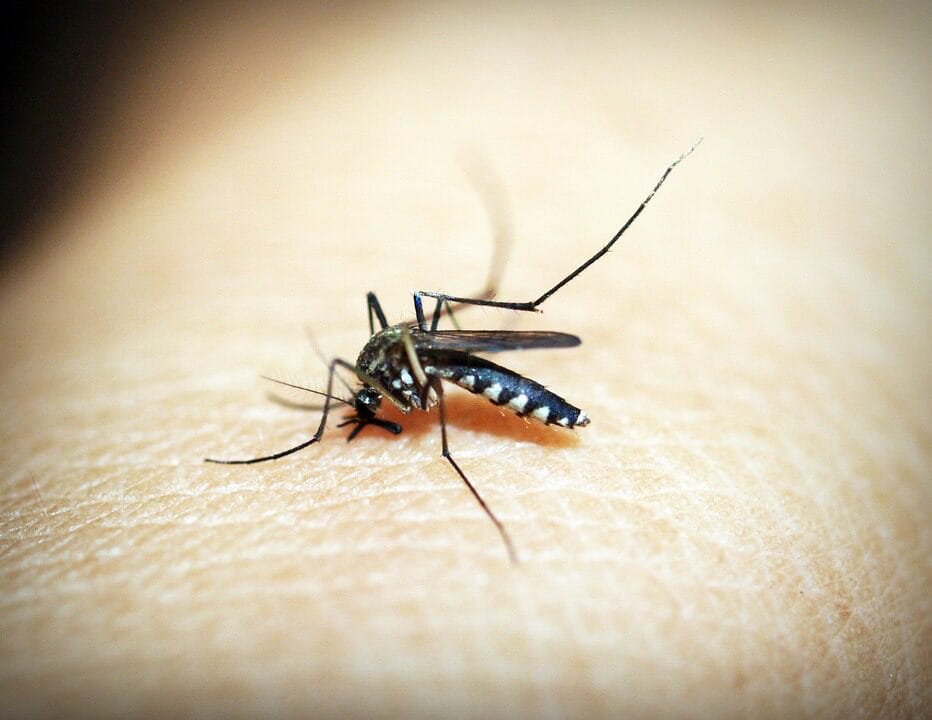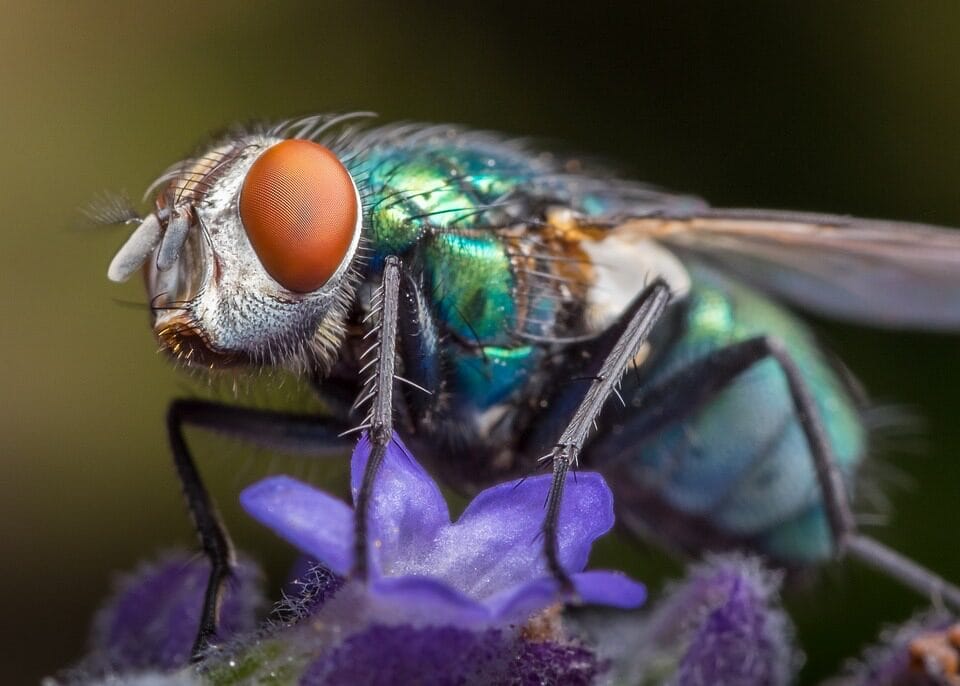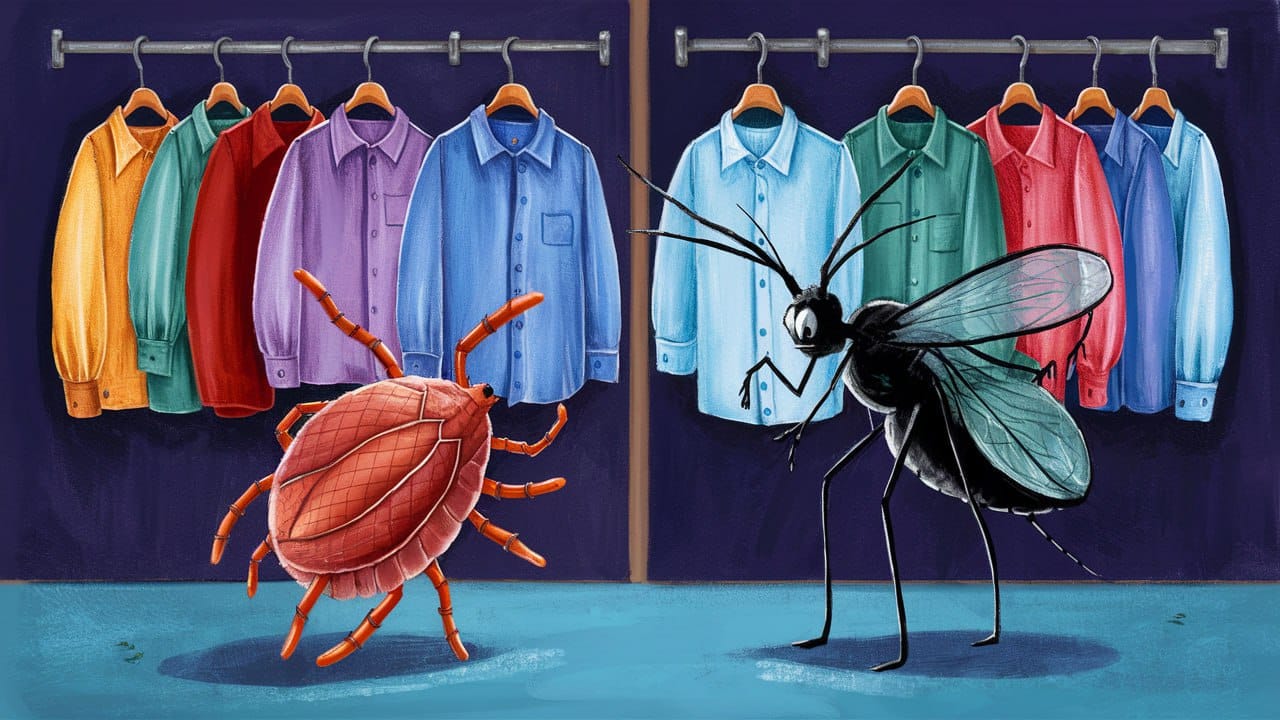It is a common belief that ticks, mosquitoes, horse flies and other animals are attracted to clothing of some colors and repelled by others. We decided to find out whether this belief is supported by scientific evidence.
Similar statements publish both the media and medical portals, however, there is no consensus on what color clothing will save a person from being bitten. For example, some sources writethat ticks attracts white color, others - that it is (as in in general light colors), on the contrary, scares away. Flies are supposedly more willing flying to blue and avoid yellow. Very popular (and varied in the content) similar notes on mosquitoes: some authors claim that these insects are attracted to clothing in red, orange, black and blue colors, but are indifferent to green, purple, blue and white. Other resources reportthat mosquitoes avoid red, yellow and white, but they adore blue And blue. In some sources approvedthat even blind insects have their own color preferences.
Bloodsucking bites are not only unpleasant, but also potentially dangerous. So, some species of mosquitoes capable carry Plasmodium parasites that cause malaria. Also, mosquito bites can be transmitted bacterial diseases (eg, tularemia), viral fevers (West Nile, Zika, Dengue, Japanese encephalitis) and parasitic infections (dirofilariasis). Due to the itching caused by mosquito bites, there is a risk of secondary infection of the scratches. Horseflies, flies and bedbugs can carry even more diseases - e.g. anthrax, sleeping sickness, Chagas disease, typhus and even polio. Ticks capable infect a person with tick-borne encephalitis, borreliosis and a number of other infections. By data According to WHO, more than 700,000 people die every year from diseases carried by ticks and blood-sucking insects.
In 2022, scientists from the University of Washington published an article in which they reported on the results of a study of the color preferences of mosquitoes of the species Aedes aegypti (yellow fever biter). Hungry insects were placed in an experimental tunnel chamber, on the floor of which two circles were placed: white (control) and changing color (stimulus). At first, the mosquitoes showed no interest in the stimulus, regardless of its color, but mainly explored the ceiling and walls of the tunnel. Then the scientists injected carbon dioxide into the chamber - the insects use it to find prey. After this, the mosquitoes began to fly more willingly to the stimulus circle. The most attractive colors were red, orange, blue and black, the least attractive were green, purple and blue.
Scientists admitIt is still unknown whether mosquitoes perceive colors in the same way as humans, but they definitely prefer certain wavelengths. The color of human skin, regardless of its pigmentation, appears to mosquitoes as a long wave in the red-orange range. Therefore, the authors of the experiment explain, mosquitoes are most susceptible to these shades. The researchers also tested whether camouflage would help humans protect themselves from these insects. To do this, one of the scientists placed his hand (in the first case, bare, and in the second, with a green glove on it) in an experimental chamber with hungry mosquitoes. Before the injection of carbon dioxide, in both cases they were not interested in the researcher’s hand, and after that they were only attracted to the naked one.
Commenting on the study results, entomologist Timothy Best notesthat mosquitoes have low visual acuity, so when searching for food they rely more on their sense of smell and heat-sensitive receptors, rather than on color perception. However, since these insects prefer to hunt at dawn or dusk, they are more sensitive to dark shades, and light ones, on the contrary, repel them. Therefore, light-colored clothing can give a person some protection from mosquito bites. However, Best emphasizes, scientists only looked at one species of mosquito, and what colors others prefer remains to be seen.

In 2015, American scientists discoveredthat mosquitoes of the species Aedes aegypti show greater interest in high-contrast objects. In the tunnel chamber, the scientists placed two spots on a white background: a dark one and a barely visible light gray one, and both were either heated to +37° C or cooled to room temperature. Mosquitoes were released into the chamber and carbon dioxide was injected. It turned out that a dark, warm spot interested the insects more than an almost indistinguishable spot of the same temperature. However, when given a choice between a warm light gray spot and one at room temperature, the mosquitoes gravitated towards the former. This experiment showed that in these insects, although vision is involved in the choice of prey, it does not determine it - even barely visible warm objects are much more attractive to them. Scientists also found that mosquitoes capture molecules of water vapor (for example, from evaporating sweat), which helps them distinguish a dark and sun-heated, but inedible stone from a potential victim. Therefore, it will not be possible to protect yourself from blood-sucking insects solely with the help of clothes of a certain color or a certain contrast.
In 2005, Swedish scientists studied color preferences of ticks. The researchers asked ten volunteers to walk through the forest, where increased activity of these arthropods was recorded. Each volunteer took 12 walks: six times he wore a light-colored set of clothes that completely covered his arms and legs, and six times he wore a similar dark one. After each promenade, scientists examined clothing in search of ticks. In total, they found 892 ticks: six adults and 886 so-called nymphs - teenage ticks that also carry diseases, but are more dangerous due to their small size. Five adult ticks and 547 nymphs were collected from white sets, and one adult tick and 339 nymphs from dark sets.
Scientists also tested which color of clothes are easier to spot ticks on. The researchers placed several specimens on one volunteer and asked another to find them. In total, this experiment was carried out 26 times. It turned out that on average, participants found 91% of bloodsuckers on light-colored clothing and 93% on dark-colored clothing. This result refutes popular recommendation wear during tick season, white clothes, since it is easier to detect these animals on it - in this sense, there is no noticeable difference between light and dark wardrobe items (although, as the study showed, more ticks were actually collected from light sets than from dark ones).
In 2019, scientists from the University of Florida found out color preferences of Musca domestica flies. To assess attractiveness, they used two methods at once: analysis of insect behavior and electroretinogram - registration of biopotentials arising in the retina during light stimulation. It turned out that blue and white colors are the most attractive to these insects, but yellow, used in many traps, on the contrary, repels them. Adding a black pattern on a blue background increased the animals’ interest even more, but the yellow lines “spoiled” even the favorite blue color - and it stopped attracting flies.

In 2010, Hungarian researchers studied, which color do horseflies like best? Three realistic full-size models of horses: white, brown and black - were covered with a special colorless sticky substance so that horseflies that landed on them could not fly away. Over the course of 54 summer days, the horse figures “grazed” in the field, and the experimenters renewed the “glue” layer every two days. As a result, the fewest insects landed on the white model, the brown one turned out to be 15 times more attractive, and the black one - 25 times more attractive. However, scientists believe that the results of their experiment should not be transferred to people without additional checks. According to the researchers, the preferences of horseflies are explained primarily not by the color of the “fur,” but by the different intensities of reflected sunlight. In the case of clothing, this indicator will play a much less significant role.
Thus, some few experiments show that ticks and blood-sucking insects can be guided, among other things, by the color of clothing when choosing a victim. However, there is not yet enough data to consider wardrobe items of certain shades reliable protection against mosquitoes, horse flies and other animals. In addition, the color of clothing itself is not the only and not the main marker by which they choose a victim.
Cover image: Ideogram AI
Read on the topic:
- Five myths about mosquitoes
- Is it true that mosquitoes prefer to bite people of a certain blood type?
- Is it true that HIV can be transmitted through mosquito bites?
- Is it true that a tick that has bitten a person needs to be tested?
- Is it true that there were significantly fewer ticks in the USSR than in modern Russia?
If you find a spelling or grammatical error, please let us know by highlighting the error text and clicking Ctrl+Enter.






